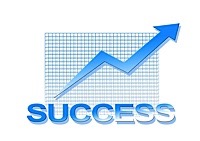
I enjoy the ride on a good commercial airline flight. It’s time that I can use to catch up on tasks that require focus. I throw the headphones on, listen to the best music ever created by mankind (70s music - as if I needed to spell that out), and get to work on the laptop. Nary a thought is given to the route the plane will take to get from point A to point B. Once we do our initial turn after taking off, it seems like a pretty straight shot to me.
Well, it’s anything but a straight shot. The auto-pilot is correcting constantly the entire route. It is being temporarily taken off course the whole trip. And, each time the elements take it off course, it corrects and gets back on the right path.















 There’s been quite a bit of chatter about the “Brian Cox Effect” in the UK recently, as interest in science seems to be on the rise. But I haven’t heard anyone talking about the “Charlie McDonnell Effect”.
There’s been quite a bit of chatter about the “Brian Cox Effect” in the UK recently, as interest in science seems to be on the rise. But I haven’t heard anyone talking about the “Charlie McDonnell Effect”.



